SEO for roofers is an excellent way to grow a roofing business.
In the following guide, I’ll reveal the SEO strategies I’ve used over the past 15 years to help thousands of roofing companies generate millions of dollars in revenue through Google organic search traffic.
I will explain:
- Why SEO is essential for roofing companies
- How to find what your customers are searching for (the right way)
- How to create content that ranks
- Local SEO best practices
- How software contributes to SEO performance
- Why you should avoid advice from SEO “gurus”
And much more.
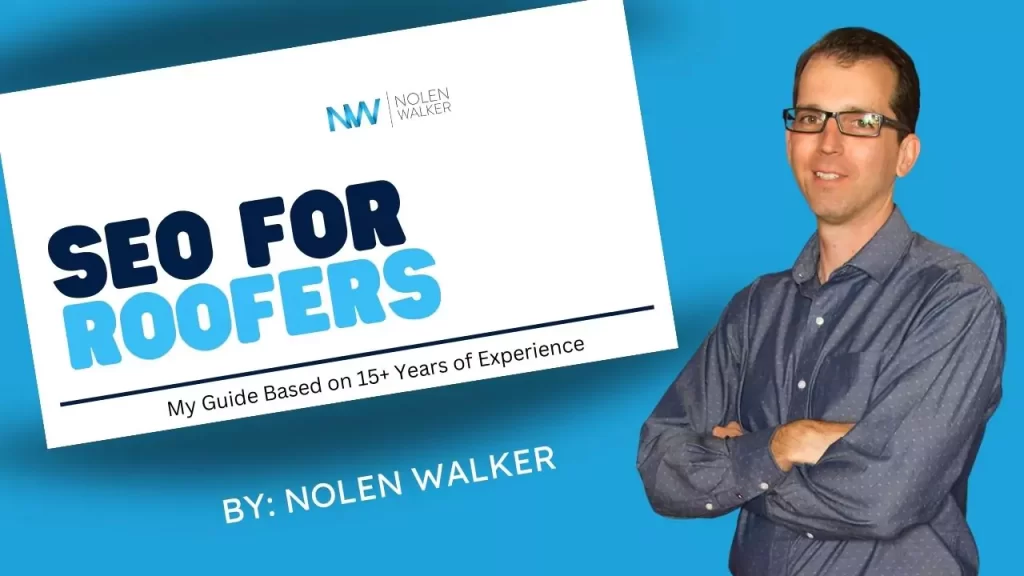
Why Roofing SEO is Essential
Potential customers search Google for roofing services 7,393,490 times per month.

The great demand for roofing services creates an opportunity for local companies to capture new customers on search engines like Google.
SEO doesn’t replace door-knocking or word-of-mouth referrals but will help maximize its impact.
Unlike those traditional marketing methods, organic traffic from SEO delivers 24/7 leads to your roofing company.
What is Roofing SEO?
Roofing SEO is the process of creating website pages to rank for roofing-related search queries, bringing in new customers.
Unlike other experts, I use the term “queries” instead of “keywords” because over half of visitors to your website will use a search query that is undetectable to keyword research tools.
Think about what your customers might search for before they find your services, such as “roof leak in fort worth tx after storm.”
You can enter that string of words into popular keyword research tools like Semrush, Ahrefs, and even Google Search Console, and nothing will show up.
Each of your prospective customers will word their queries slightly differently, creating thousands of variations of a single user intent.
User intent is the searcher’s goal when searching Google (i.e., finding storm damage roof repair services in their area.)
SEO ensures that your website pages rank for all these terms to capture the highest possible percentage of your local customers.
SEO Ranking Factors
The seven confirmed ranking factors for traditional organic search results are:
- Links
- User Intent
- Freshness
- HTTPS
- Mobile Experience
- Page Speed
- Intrusive interstitials
However, at least 200 ranking factors determine where your website ranks for a query, most of which are unconfirmed by the search engine powerhouse.
If that weren’t enough to think about, Google changes its algorithm 12 times per day and 4,500 times per year.
The algorithm’s complexity is why most roofing companies invest in professional SEO services after reaching a specific revenue benchmark.
However, roofers must first understand the process itself to appreciate the value of SEO services.
Free SEO Consultation for Local Roofing Companies
What Do Roofing Customers Search For?
If you take one thing from this guide, let it be identifying what your customers are searching for.
In the SEO world, this process is called keyword research.
Unfortunately, the subject of keyword research for roofing websites breeds overwhelming misinformation.
Gurus will tell you to target keywords that appear on popular keyword research tools like Semrush and Ahrefs.
Unfortunately, these tools miss over 50% of queries that future customers will use to find your business.
As a result, following their advice will cost you at least half of your potential customers.
Step 1: Foundation Keywords
The tools mentioned above, Ahrefs and Semrush, are valuable for the first step of your keyword research: identifying your foundation keywords.
For most roofers, this will start with the phrase roofing + city name.
Examples of this include:
- Roofing fort worth
- Roofing dallas
- Roofing houston
- Roofing denver
- Roofing orlando
Enter roofing + (your city name) into Semrush and sort by keyword volume.
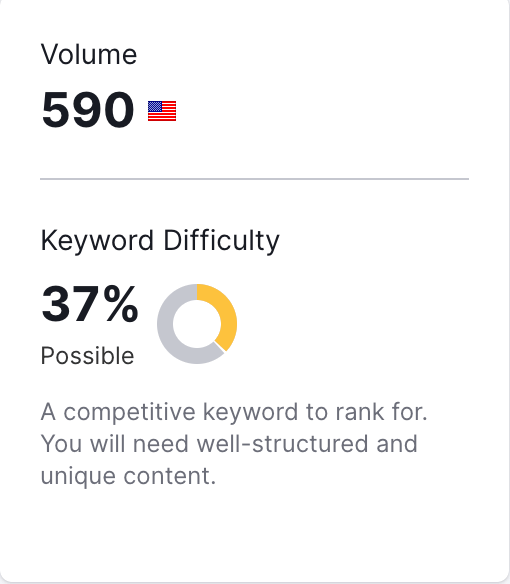
Other foundation keywords will include:
- Roof repair + city name
- Roof installation + city name
- Roof replacement + city name
- Roof inspection + city name
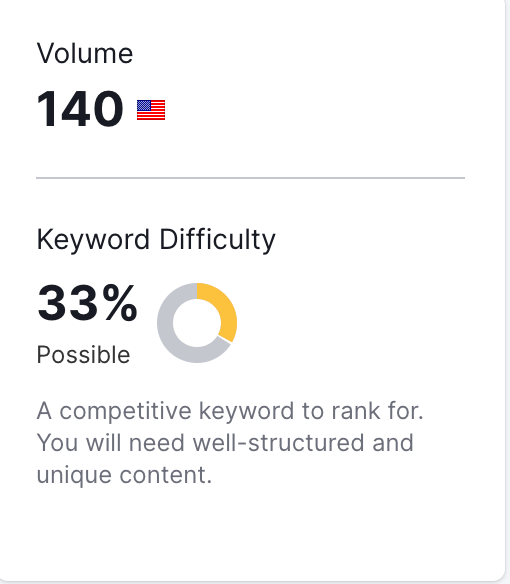
Step 2: Specialty Keywords
The exact services your roofing company offers vary by resources, size, location, etc.
For example, some roofers offer both residential and commercial roofing services, while others offer one or the other.
Similarly, some companies provide metal roofing, tile roofing, foam roofing, and other specific service types, while others don’t.
This is where your specialty keywords come into play.
First, write down all of your specific roofing services, something like:
- Residential
- Commercial
- Emergency
- Asphalt Shingle
- Tile
- Foam
- Metal
- Flat
- TPO
- EPDM
Next, you’ll want to enter the specialty + roofing keyword into Semrush.
DO NOT INCLUDE THE CITY NAME in this portion of your keyword research.
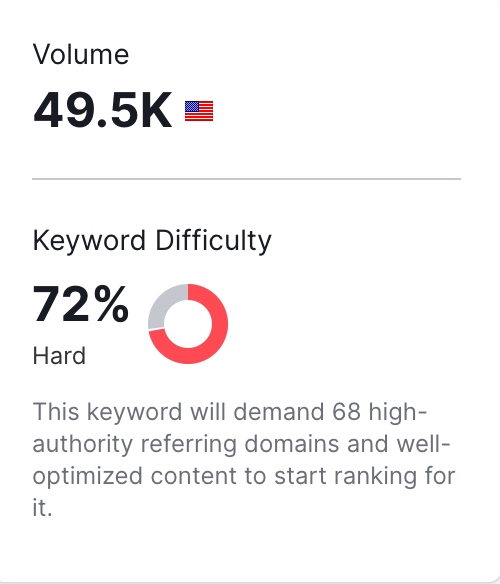
Once you record the national search volume for your keyword, use Semrush’s “select location” feature to estimate your city’s keyword volume.

Remember, this is a general estimate; many terms will inaccurately show zero search volume.
That’s why you’ll want to look at both the national search volume, the local search volume, and the population of your city.
In the case of metal roofing, the three numbers are:
- National volume: 49,500
- Local volume: 110
- Local population: 956,709
Looking at these numbers together, it’s easy to see that this is a great keyword opportunity for a Fort Worth-based roofing company.
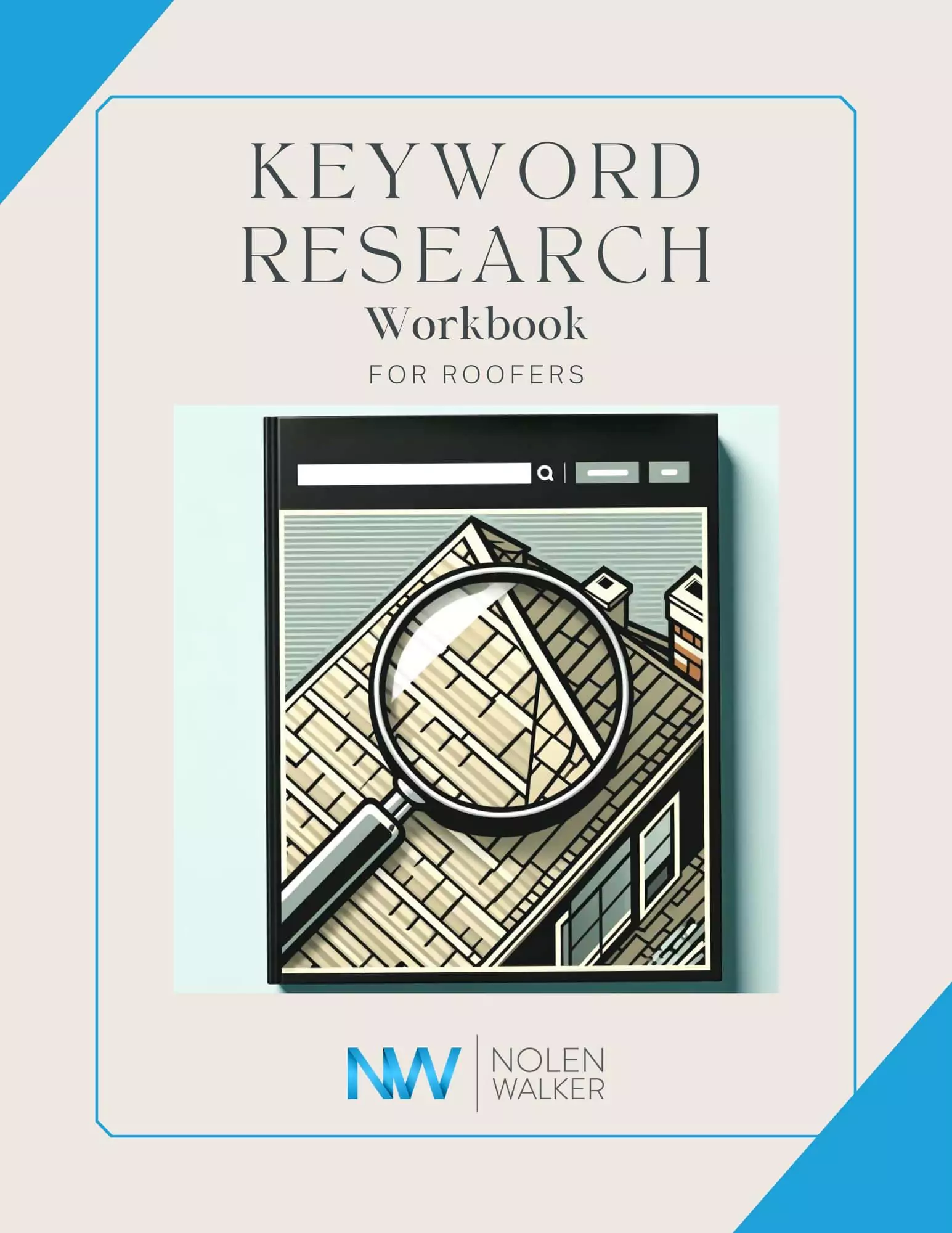
Free Keyword Research Workbook for Roofers (PDF)
Step 3: Hidden Keywords
Hidden keywords are terms you can’t officially research but still must account for.
These terms will represent over 50% of your organic SEO visitors.
How do I know this? I ran a comprehensive research case study based on 10+ years of Google Search Console data from over 1,000 roofing websites.
Ahrefs conducted a similar study and reached similar findings.
Typically, hidden terms are long-tail phrases (3 words or more), such as:
- brava barrel shingle roofing repair fort worth
- shingle roof repair after hail storm dallas
- sbs polymer infused shingle houston
Tools like Ahrefs, Semrush, and Google Search Console can’t help you find these queries.
When you enter them into keyword research tools, they display a “N/A” search volume.
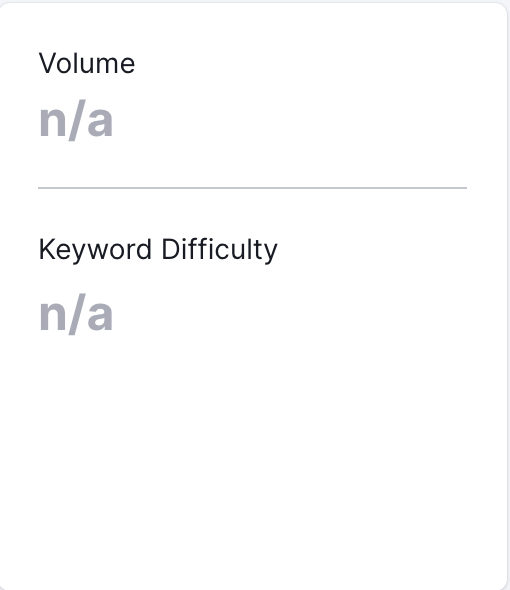
Do you use a field service management app like Acculynx, JobNimbus, or Field360?
If so, your job data will store the specific services you offer.
Alternatively, you can use a tool like DataPins, NearbyNow, or GeoJuice to document your recent jobs directly on your website.
This step ensures your pages will rank for the thousands of hidden terms users search for.
How to Create Content That Ranks #1 on Google
There are multiple strategies roofers can use to create content that ranks #1 on Google.
- You can create a page for each service (residential, commercial, metal, etc.)
- You can also create a single page that ranks for multiple services. (more on this later)
Either way, your ability to rank #1 comes down to your website’s authority and optimization.
You have limited control over authority since your website gains trust over time through natural backlinks, customer reviews, and brand mentions.
However, you CAN control how you optimize your content.
SEO professionals refer to optimizing content as on-page SEO.
Common on-page SEO factors like title tags and meta descriptions are relatively well-known.
For example, your page about metal roofing services in Fort Worth should have the following:
Title: Metal Roofing Services in Fort Worth, TX | Company Name
Meta Description. Company Name offers top-notch metal roofing services in Fort Worth, TX. Our 60+ 5-star Google reviews demonstrate our commitment to professional metal roofing solutions for Fort Worth residents.
Pretty simple, right?
While titles and meta descriptions are fundamental to on-page SEO, lesser-known factors move the needle in rankings and conversions.
Relevance
How would you feel if you picked up a book with a roofing title and opened the first page to find content about landscaping?
You would probably feel misled.
That’s exactly how Google users feel when they click on a misleading search result.
Google’s algorithm knows this, which is why it ranks relevant content.
To rank in the top 3 Google search results for roofing-related terms, you must create relevant content that meets a user’s intent.
Not only that, but the body content must be relevant to your title tag and meta description.
For example, a page titled Roofing Insurance Claims should detail the claims process from the point of view of a roofing professional with first-hand experience.
The content should answer common questions your customers ask about this process and cite real-world examples from your past.
When you can inject unique insights into your content (things that only you could know, you gain a significant ranking boost that your competitors cannot replicate.
Site Speed
Your page’s speed is a significant ranking factor because of its impact on user experience.
Head to Google PageSpeed Insights to test your page’s current speed.
Any score below 50 is a cause for concern.
If your pages consistently score low on desktop and mobile, you likely have a problem with your hosting server or image files.
Digital Branded Signaling
Over the past several years, Google has cracked down on content made for search engines rather than users.
They’ve released multiple iterations of their Helpful Content Update along with the March 2024 Core Update, all of which target content that lacks what I call “branded digital signaling.”
Google has its own term for this: EEAT or experience, expertise, authority, and trust.
Google has publicly stated that EEAT is NOT a ranking factor.
However, search quality raters, who are people Google hires to evaluate the performance of its algorithms, are trained to look for EEAT when grading pages.
When pages without sufficient EEAT rank well on Google, the following algorithm update aims to lower those rankings in favor of pages that better demonstrate those branded signals.
Tangible ways to improve your website’s EEAT include:
- Awards
- Badges
- Licenses
- Social Proof
- Recent Projects
- Check-ins or Pins
- Reviews (Especially Google Reviews)
- Original Images
- Schema Markup
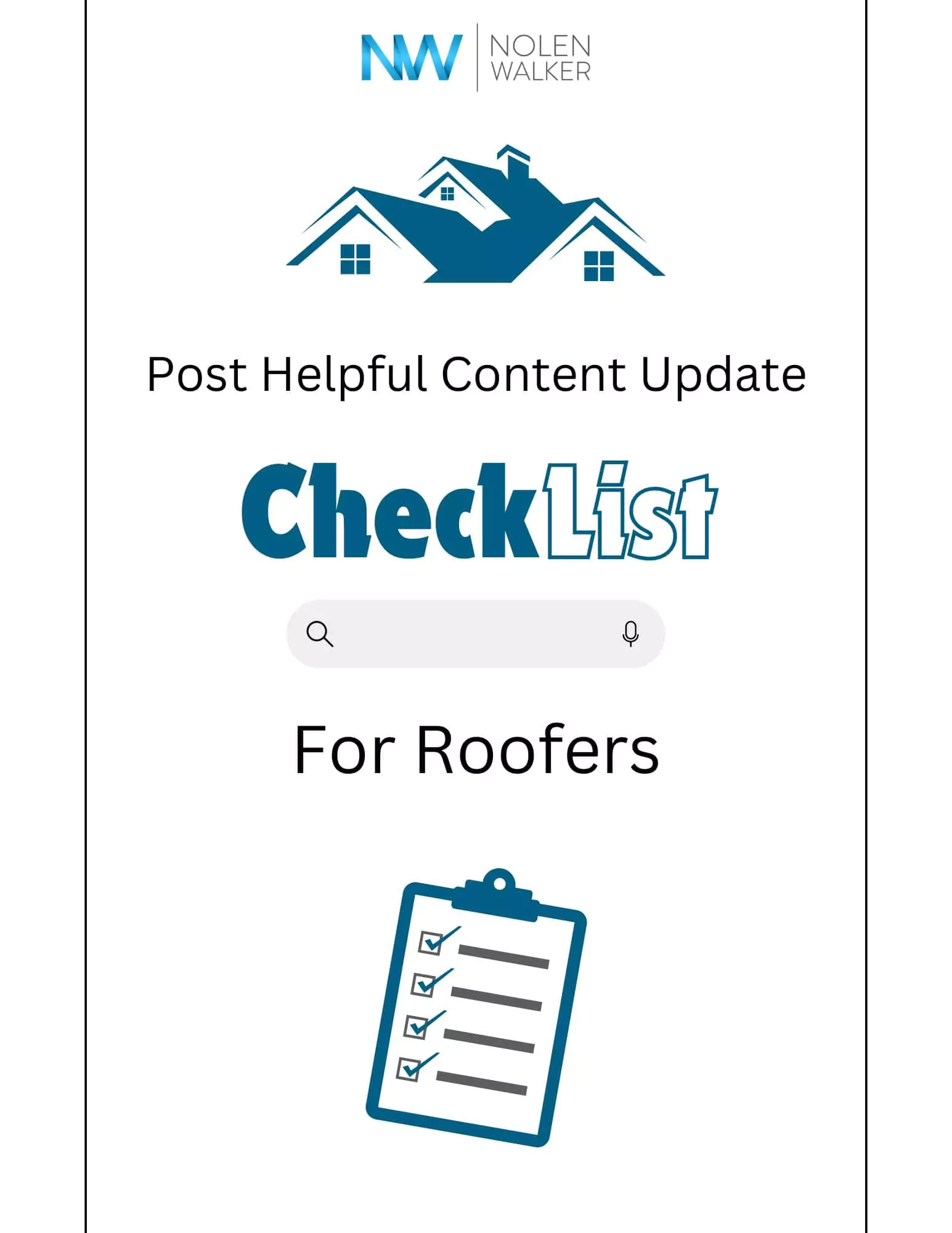
Post Helpful Content Update Checklist for Roofers (PDF)
Local SEO Best Practices for Roofing Companies
As a local roofing company, your Local SEO strategy is crucial to maximizing customer acquisition.
The on-page SEO factors mentioned above also apply to local SEO, but you must consider multiple other components at the local level.
The most significant local ranking factor is your Google Business Profile.
A Google Business Profile (formerly Google My Business) is a verified local listing for your roofing company through Google’s business database.
A verified Google Business Profile is eligible to rank on Google Maps and Google’s Local Map-Pack (sometimes called the 3-pack).
Helping roofers claim their Google Business Profile is one of the first things I do with my clients, as it sets the stage for the rest of your Local SEO strategy.
After claiming and verifying your Google Business Profile, you can optimize your listing by ensuring it contains accurate information.
Pay particularly close attention to the “website” field of your profile.
Your official website must be connected to your Google Business Profile because it powers the SEO for your listing.
I encourage roofing companies to upload unique photos of their staff, equipment, and recent projects directly to their business profile.
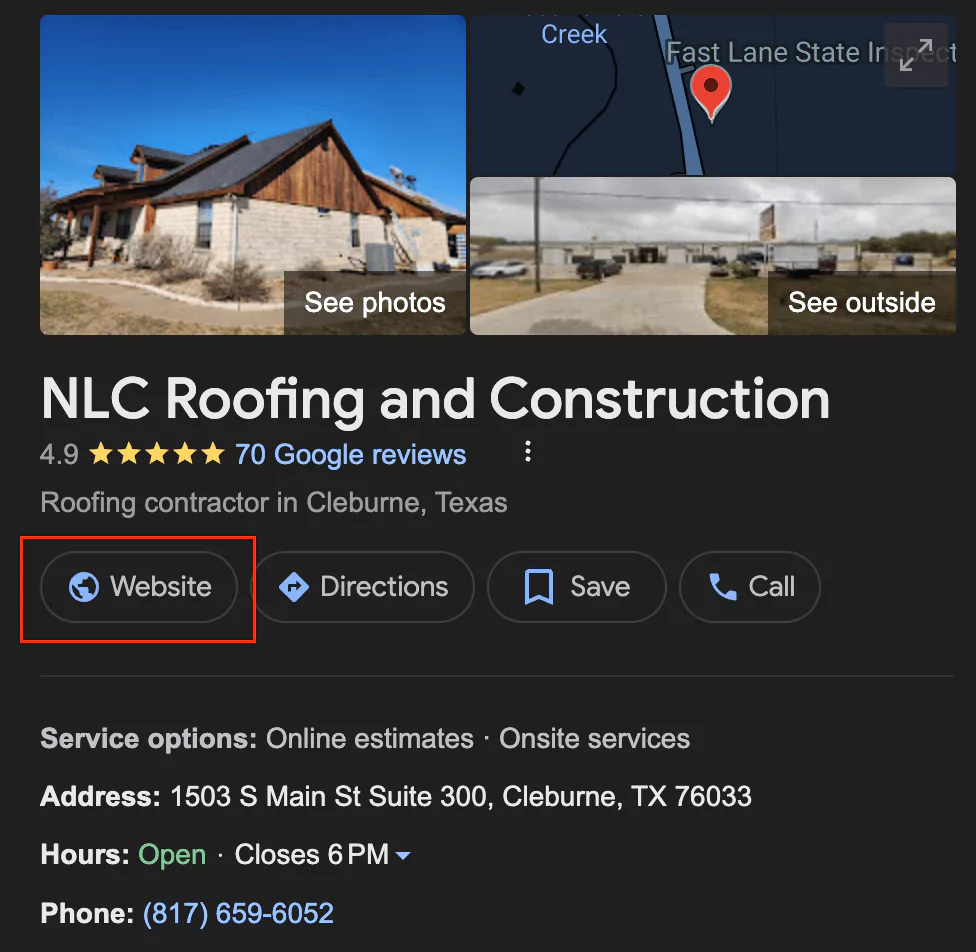
Requesting Google Reviews
Ranking on Google’s Map-Pack requires consistently acquiring customer reviews.
I recommend using software to automate customer review requests through email and text messaging.
Including an on-page HTML widget showcasing Google reviews directly on your website is also a helpful action to take
You can expect your rankings and conversions to increase simultaneously as you increase reviews.
Google Business Address
The top Google Maps ranking factor is proximity, something some roofers don’t like to hear.
If your address is on the outskirts of your primary city, you will lose traffic to competitors on Google Maps.
You can still rank for your city in traditional (organic) search results but will not rank in the map 3-pack.
The only way to overcome this is to physically move your business to a better location.
Target offices in the center of your target city, which typically leads to higher Google Maps rankings.
City / Location Pages
The strategy of producing individual pages for each city or location in your service area has been around for decades.
While it can work when properly implemented, it can also penalize your website, especially in light of the recent Helpful Content Updates.
It all depends on HOW you create city pages.
For example, a 100% unique city page that talks directly to consumers in that location while showcasing jobs and reviews from other customers will perform well on search.
Conversely, mass-produced city pages that swap out the city names but nothing else are likely to cause a penalty for your entire website.
In Google’s eyes, these are called doorway pages, meaning they are “bait” used to get users to your website without offering unique value.
So next time someone asks whether city pages are considered “best practices” for Local SEO, the answer is: It depends on how they are created.
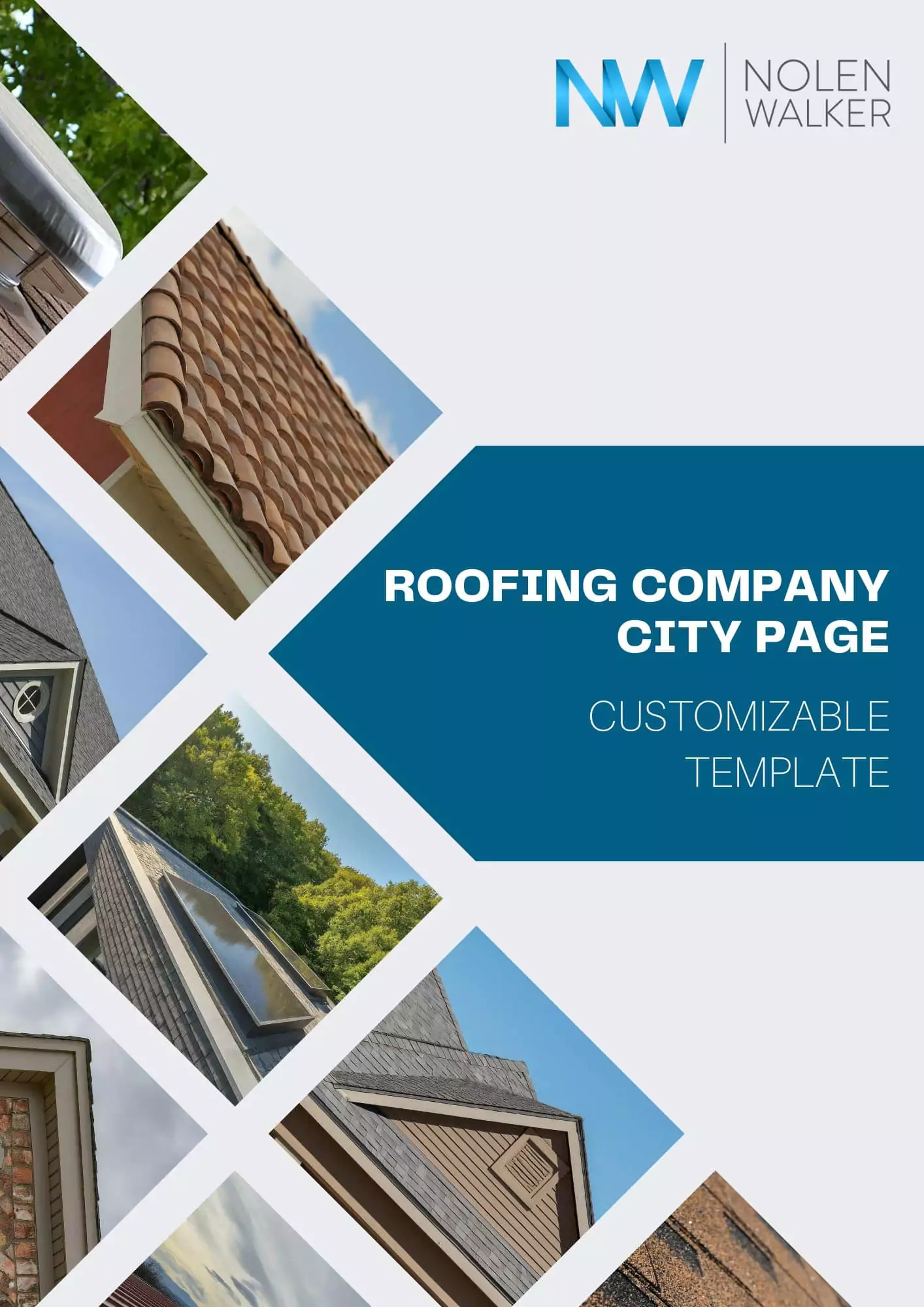
City Page Template for Roofers (PDF)
How Software Contributes to SEO Performance
I’ve run my SEO agency for 15 years and constantly seek ways to help my clients’ performance.
About five years ago, I invested millions into developing a software tool called DataPins.
It’s even been featured in Contractor Magazine.
In response to recent Google Algorithm Updates and the challenges they present to service area businesses like roofing companies, I created a tool specifically to improve SEO for roofers.
DataPins allows roofers to tag each of their roofing jobs and projects to their website as a pin.
Each pin includes unique photos, job descriptions, geo-coordinates, and schema markup.
The software’s user-friendly dashboard enables contractors and their staff to tag various pins on specific website pages.
For example, a TPO roof repair in Dallas can be tagged to your TPO roofing service page AND your Dallas location page.
Now, each of your web pages demonstrates the coveted social proof that Google values in its modern algorithm.
The tool also includes reputation management features such as review requests and on-site review widgets.
My software is not the only tool that can help roofers improve their search engine performance.
Tools like Link Whisper and WPRocket also help “move the needle.”
Get a DataPins Demo Today
Avoiding SEO Guru Advice
Because of the nature of the internet, self-proclaimed gurus can rank for terms like “roofing SEO” by providing advice based not on first-hand experience running an SEO agency for roofers but simply on having a reputable “name.”
I urge roofers to exercise skepticism when reading or listening to these gurus, many of whom mean well but don’t have extensive experience running an agency.
They take on clients occasionally and sell courses, but they don’t have longevity and proven results to support their claims.
Examples of advice from “gurus” include:
- Only target roofing keywords from Ahrefs and Semrush
- You will capture 30% of organic clicks by ranking #1 for roofing + city
- Build “topical authority” through linkable blog posts
- Purchase backlinks
These arguments present falsehoods and mistruths that can harm a roofer’s SEO presence over time.
For example, creating blog posts can lead to vanity traffic to your website but a lower conversion rate.
In addition, blog posts can create keyword cannibalization and trigger an algorithmic Google penalty.
The concept that you can only become an authority on metal roofing, for example, by creating multiple blog posts about metal roofing, is false.
A better way to create authority on a particular service is to showcase a recent metal roofing job your company performed in your target city.
This is actual data that helps prospective customers have a good user experience rather than an aimless blog post that exists only to trick search engines and attract backlinks.
Showcasing recent jobs can also help you rank for multiple services on a single page, especially for niche services like metal barn roof installation.
Conclusion
I hope my guide helps roofing professionals better understand SEO so they can make informed decisions on investing their resources going forward.
While SEO for roofers can be complex, its fundamentals are easy to understand.
My agency has been working with roofing companies for over 15 years, and I’ve learned a lot during that time.
My insights on content creation, Local SEO, and software are all rooted in first-hand experience with actual roofing companies.
Please reach out to me directly if you have further questions regarding my process or how it applies to your unique scenario.

Author: Nolen Walker
Nolen Walker is an SEO entrepreneur with 15+ years of first-hand experience working with roofing professionals. He is the founder of DataPins, Field360, and Roofing Webmasters and author of A Complete SEO Guide for the Roofing Small Business Owner. Nolen also hosts The Roofing SEO Podcast and Roofer’s Paradise podcast on Spotify.
